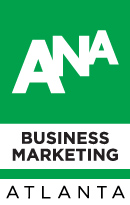Business Challenge and Objective
Microsoft Surface was critical to the brand’s mission of “One Microsoft,” which served as the gateway to the Microsoft ecosystem. Consequently, the brand was ambitiously driven to see the device win market share in the commercial space from key competitors such as Google and Apple, who are entrenched in the education fields and in creative industries, respectively.
Surface needed a way to increase sales to small organizations while also:
- Delivering returns quickly to hit targets before the end of the financial year
- Capitalizing on the opportunity for global growth by demonstrating its adaptability to each market
- Motivating and enabling sales partners
- Continually improving in response to customer intelligence insights gathered from direct calling
Insights and Strategy
Microsoft interviewed its sales partners and partner managers to understand in what areas they focused their time and would benefit from more support. It became apparent that many partners were used to selling Office, Dynamics, Windows, or other Microsoft products, and were unfamiliar with Surface. It was a different type of product: hardware, not software. Based on the interviews, Microsoft learned that it needed to provide:
- Compelling guidance on how and why to sell Microsoft Devices — a premium hardware proposition
- Messaging tailored to sub-sectors within professional services, such as the legal and marketing fields
- Greater coordination with partner managers
- Efficient opportunity-routing, to ensure that leads were directed to the right partners, without duplication or channel conflict
Execution
To respond to partners’ needs, Microsoft developed an array of assets, including:
- Web presentation guides
- Industry-specific messaging
- Pitch presentations
- Product guides and information
- Industry buzzword glossaries
In addition, Microsoft designed the demand-generation team according to a hub-and-spoke model. The central team was based in Seattle, with local teams in each region that helped feed market insights back to Microsoft’s headquarters. Each region had telemarketers and a custom dataset. The agents on these teams were briefed to act more consultatively with the target organizations than they might with a traditional calling approach. They researched the company’s IT estate, device usage, and worker profiles. Call guides then supported them in identifying the right targets and appeals to use within the organization, and provided content that suited those approaches.
These agents didn’t operate as hit-and-run artists; on the contrary, they were responsible for nurturing each sales opportunity until it was ready for the partner sales team — whether that lasted days, months, or the entire year.
Results
Globally, the program generated 644 opportunities during the course of the year up to December 15. The value of these opportunities was $57.88 million in the sales pipeline. This value was divided across the U.S., Canada, U.K., Western Europe, and Australia, with several million dollars of pipeline in each region.
In addition, the program established a single, centralized project team, which managed everything between Microsoft stakeholders, partners, and telemarketers. This level of external agency consolidation was unprecedented for Microsoft.
Source
“Microsoft Surface Global Demand Generation Engine.” 2018 B2 Award Gold Winner, Sales-Enablement Tools (Division: Channel Partner Engagement Program). Brand: Microsoft Devices. Lead Agency: The Marketing Practice, Inc.


